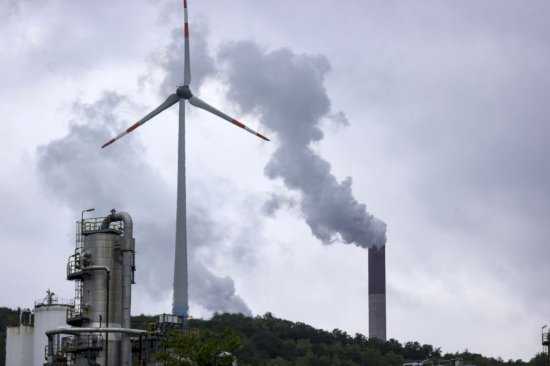
"Energy transition” can mean different things to different people—and the oil and gas industry wants it to include fossil fuels
When I first started attending CERAWeek by S&P Global, perhaps the world’s most influential energy conference, many attendees treated the phrase “energy transition” almost as a dirty word or the butt of a joke. This year, the fact that we’re in the midst of an energy transition is treated as a given. It’s hard to find a panel or listen to a hallway conversation without hearing the phrase. Indeed, “multidimensional energy transition” features on the cover of the thick program handed out to attendees.
But “energy transition” can mean different things to different people. In climate circles, and most common parlance, the energy transition refers to a shift from fossil fuels to clean power sources like wind and solar power. Under this definition, there is a vibrant debate about many details of which energy sources will dominate the energy system in 30 years, but there is no question that fossil fuels need to be phased down.
[time-brightcove not-tgx=”true”]The pulse among many oil-and-gas executives here is different. In their telling, the energy transition will include growing production of oil and natural gas. Renewable technologies like solar power will continue to expand but not enough to stop fossil fuels from expanding, too. “We’ll bring the molecule solution set, and others are bringing the electron solution set,” ExxonMobil CEO Darren Woods told the conference in the opening hours (oil and gas move as molecules, electricity as electrons). “I’m not suggesting one is better than the other. I’m suggesting we need both.”
The truth is that the future of demand for various energy sources in the medium and longer term remains to be determined and even energy modelers are engaged in a vigorous debate. The International Energy Agency (IEA) finds that demand for all fossil fuels is likely to peak by 2030 under current policies. OPEC’s analogous model shows demand growing through 2045.
Many at CERAWeek would call their emphasis on growing demand a “reality check” about the necessity of their industry. It is, of course, true that the world requires fossil fuels to meet near term needs. But it bears repeating that discounting climate change carries grave risks, not just from rising temperatures but also from the societal challenges that will result. To avoid these, policymakers will need to use a variety of tools to push the market to a sustainable future.
At the heart of the industry’s evolving approach to the energy transition is really just that the massive shift in the way energy is produced, transported, and consumed is now self-evident. Trillions of dollars have been spent around the world on new energy technologies and exponential growth has followed. Despite reports of a slowdown, electric vehicle sales are surging in the U.S., Europe, and China—resulting in a shift away from gas toward electricity.
But what are we transitioning to? In a climate-friendly world, a smooth transition might track the IEA’s so-called net zero report, which in 2021 charted a glide path to eliminate emissions by mid-century. That report suggests that by 2050 nearly 70% of electricity comes from wind and solar power, with intermediate steps along the way.
But the IEA scenario is ultimately just a scenario. Making it a reality depends not only on supportive policies but also adapting to events like the Russian invasion of Ukraine that scrambled energy markets, and the rising electricity demand from data centers resulting from AI.
Some in the industry see the evolving circumstances as an opportunity to pull back. Saudi Aramco CEO Amin Nasser told the conference that the transition is “visibly failing.” “We should abandon the fantasy of phasing out oil and gas, and instead invest in them adequately, reflecting realistic demand assumptions,” he said.
Ramping up investment in natural gas paired with renewable growth may seem like the easiest choice to address growing electricity demand. But investment in new fossil fuel resources risks dashing chances of meeting climate targets—and unleashing the economic and human suffering that would entail.
And there are other ways to meet demand economically. Implementing energy efficiency measures to reduce electricity consumption is relatively easy. Speeding up the construction of transmission lines to connect electricity production to the places that need power most would also go a long way. So, too, would slowing the retirement of nuclear energy. In technical, economic, and climate terms, these solutions may be ideal. But getting the politics and policies necessary is more complicated.
“People here are all expecting energy demand to continue growing, and that fossil is going to be the logical solution,” says Jon Creyts, CEO of RMI, an environmental non-profit, noting that in fact renewable energy is cheaper and increasingly available. “There’s a bit of a walking over a cliff mentality.”